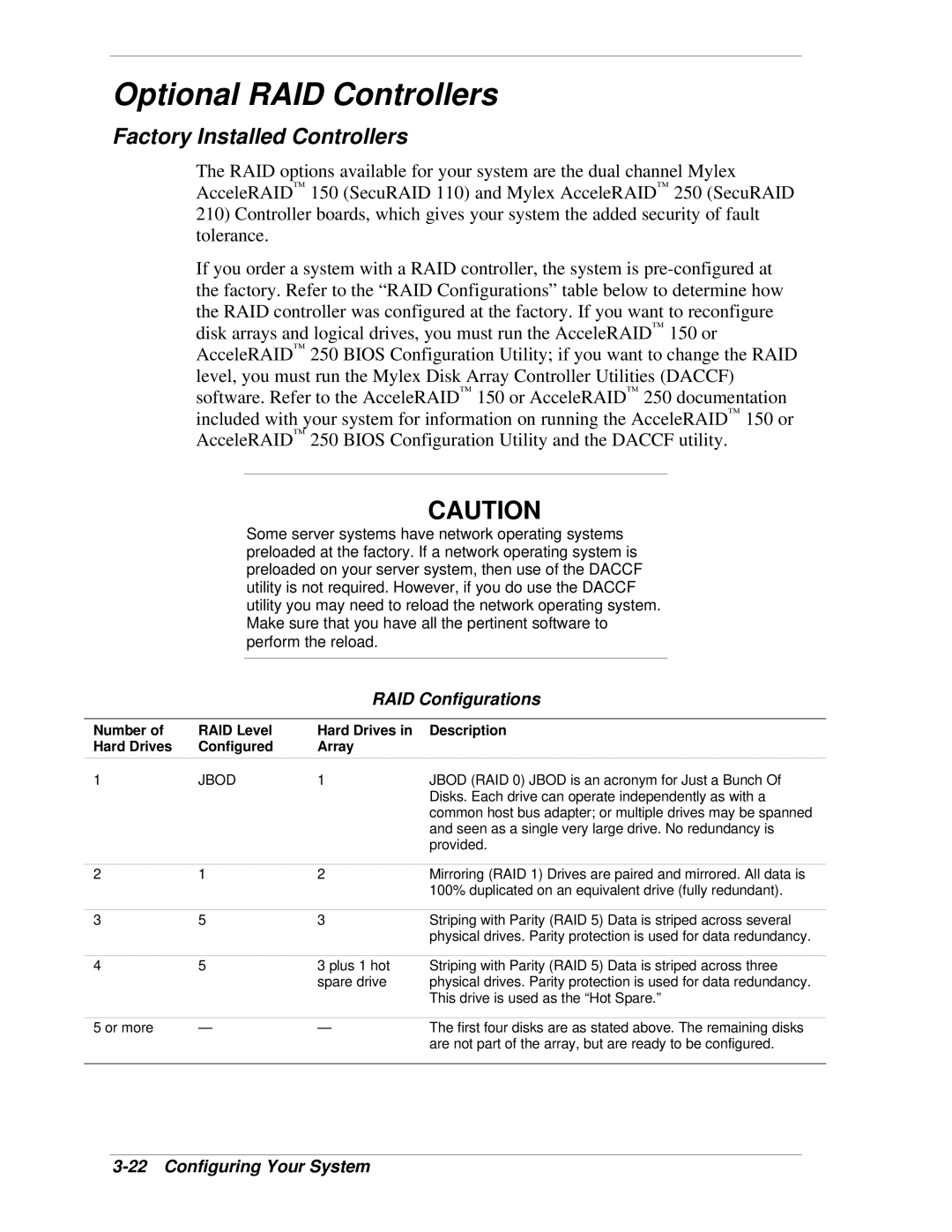
Optional RAID Controllers
Factory Installed Controllers
The RAID options available for your system are the dual channel Mylex AcceleRAID™ 150 (SecuRAID 110) and Mylex AcceleRAID™ 250 (SecuRAID
210)Controller boards, which gives your system the added security of fault tolerance.
If you order a system with a RAID controller, the system is
CAUTION
Some server systems have network operating systems preloaded at the factory. If a network operating system is preloaded on your server system, then use of the DACCF utility is not required. However, if you do use the DACCF utility you may need to reload the network operating system. Make sure that you have all the pertinent software to perform the reload.
RAID Configurations
Number of | RAID Level | Hard Drives in | Description |
Hard Drives | Configured | Array |
|
|
|
|
|
1 | JBOD | 1 | JBOD (RAID 0) JBOD is an acronym for Just a Bunch Of |
|
|
| Disks. Each drive can operate independently as with a |
|
|
| common host bus adapter; or multiple drives may be spanned |
|
|
| and seen as a single very large drive. No redundancy is |
|
|
| provided. |
|
|
|
|
2 | 1 | 2 | Mirroring (RAID 1) Drives are paired and mirrored. All data is |
|
|
| 100% duplicated on an equivalent drive (fully redundant). |
|
|
|
|
3 | 5 | 3 | Striping with Parity (RAID 5) Data is striped across several |
|
|
| physical drives. Parity protection is used for data redundancy. |
|
|
|
|
4 | 5 | 3 plus 1 hot | Striping with Parity (RAID 5) Data is striped across three |
|
| spare drive | physical drives. Parity protection is used for data redundancy. |
|
|
| This drive is used as the “Hot Spare.” |
|
|
|
|
5 or more | — | — | The first four disks are as stated above. The remaining disks |
|
|
| are not part of the array, but are ready to be configured. |
|
|
|
|
